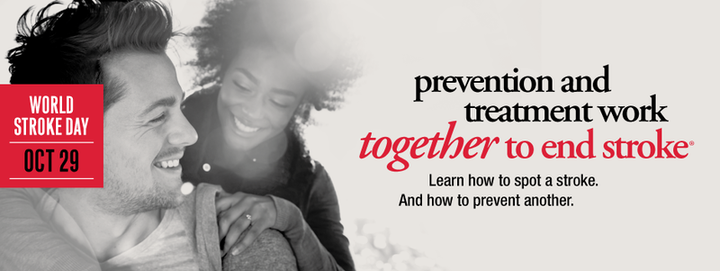And yet Nancy Brown, CEO, American Heart Association, I see you doing nothing to solve any of the problems in stroke. You are taking the lazy route - fucking press releases. LEADERS tackle the tough problems. Are you a leader or NOT? Contact me at oc1dean@gmail.com and your board of directors, you and I can discuss how to get survivors 100% recovered.
World Stroke Day Is A Great Time To Take On The No. 2 Killer Around The Globe
Nancy Brown, Contributor
CEO, American Heart Association
10/25/2017 11:24 am ET
Updated
1 day ago
The story seems like fiction.
A
9-year-old boy in Latin America loses his mother to a stroke. His six
older siblings raise him, providing the guidance and financial support
to become the only member of their generation to attend college. Then he
goes to medical school. Decades later, he’s known around the world as a
physician, professor, scientist and writer focused on the disease that
claimed his mother.
But Dr. José Biller’s tale is true.
And in the days leading up to Sunday – which is World Stroke Day
– he’ll be doing what he does all year long: working to turn a
spotlight on the second most common cause of death in the world and the
No. 1 cause of adult disability.

About
every 40 seconds, someone in the United States has a stroke. A
stroke-related death occurs about every 4 minutes. Those stats are even
more excruciating when you realize that 80 percent of strokes are preventable and that advancements in treatment have improved the odds of recovery.
“What’s your reason for preventing stroke?” is the theme of this year’s World Stroke Day. For Dr. Biller, the reasons are many, and they date back to the late 1950s.
Osias
“Oscar” Biller and his wife Elena emigrated from Europe to South
America in 1920, settling in Argentina then moving to Montevideo, the
capital of Uruguay.
Oscar
owned a restaurant and Elena was known as a kind, gentle, gregarious
woman. The family was close-knit, with all seven children often
gathering for meals and celebrations. The large brood set the Billers
apart in their neighborhood as most families had only two kids.
Soon the Billers stood out for another reason.
Oscar died of a heart attack. Six months later Elena died of a stroke.
“This was the first time I encountered the word ‘stroke’ or ‘brain hemorrhage,’” José said.
His
four brothers ranged in age from upper teens to early 20s, and they
worked hard to keep the family afloat. His two sisters helped care for
him. Seeing how stressful life was for them, José sought a different
path.
“I
had a lot of respect and love for my siblings because of what they did
and the opportunity I was given,” he said. “I never took anything for
granted.”
In
medical school, José was fortunate to have excellent professors in
neuroanatomy and neurology. He set out to become an internist until a
rotation with a neurologist introduced him to that field’s challenges
and the critical thinking skills it required.
Add in his personal experience and he’d found his calling.
“Stroke
is one of the conditions where the affected patient is not the only one
who has to overcome a number of issues – it’s a family disease,” said
Dr. Biller, who is now the chair of the Department of Neurology at
Loyola University Chicago Stritch School of Medicine.
Beyond the obvious pain and anguish endured by a stroke patient, the impact can reverberate throughout a family.
It can start with the need for relatives to become caregivers. This could be for days … or decades.
Once a close relative has had a stroke, it’s another risk factor for you. You now have a family history.
“The
education of family is critical, particularly among certain
socioeconomic groups that perhaps do not have knowledge of the warning
symptoms or risk factors,” Dr. Biller said. “Therefore I always talk
about prevention. It may not be a very sexy subject, but it’s a critical
component of health care.”
High blood pressure, also called hypertension, is the No. 1 cause of stroke and the most important controllable risk factor. Getting it under control usually comes down to lifestyle changes such as eating healthier, becoming more physically active and drinking less alcohol.
Controlling blood pressure also lowers your risk of heart disease.
***
Educating
people about stroke has all sorts of great ramifications. While
prevention tops the list, another key is teaching the warning signs.
Do you know how to spot a stroke FAST?
No comments:
Post a Comment